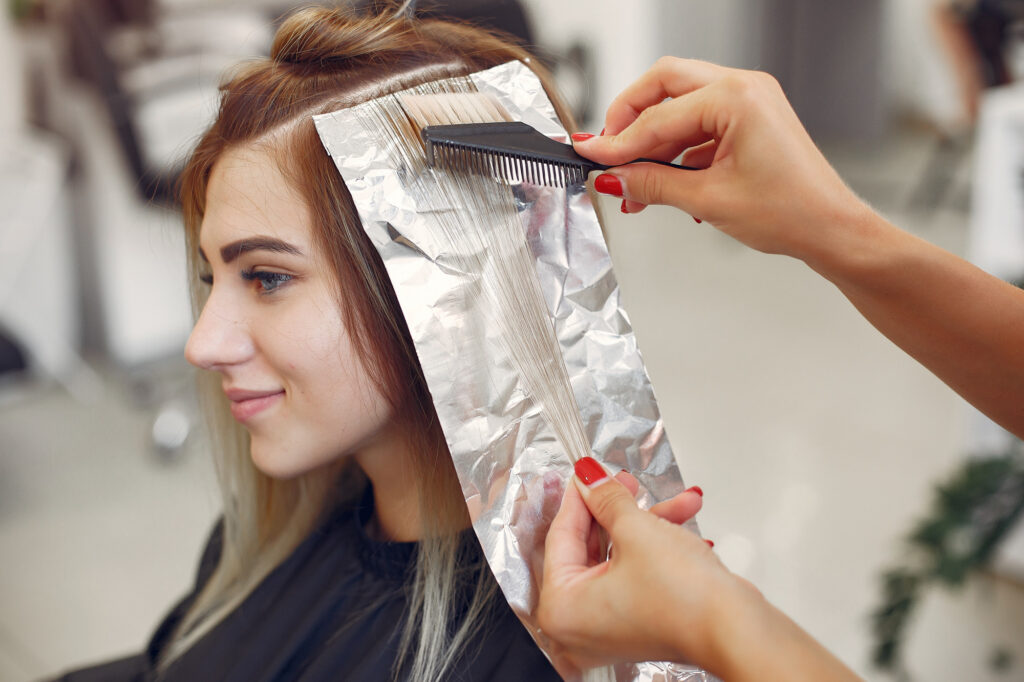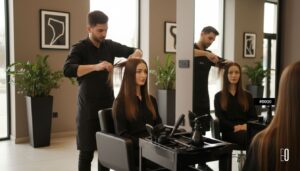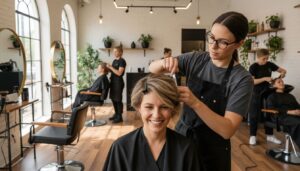Building the right daily hair care routine can make an enormous difference in how your hair looks and feels. Think about this. Nearly 80 percent of people use products that do not match their true hair type. Most folks chase trends or grab what is popular, yet end up stuck with dull, brittle strands. The real secret is not about the fanciest shampoo. It is about understanding your own hair and making small changes that add up to dramatic results.
Table of Contents
- Step 1: Assess Your Hair Type And Needs
- Step 2: Choose Quality Products For Your Hair
- Step 3: Establish A Consistent Washing Schedule
- Step 4: Implement Effective Drying Techniques
- Step 5: Style Your Hair With Attention To Detail
- Step 6: Monitor Hair Health And Adjust Accordingly
Quick Summary
| Key Point | Explanation |
|---|---|
| 1. Assess your hair type carefully | Identify your hair’s natural texture and health to tailor your care strategy effectively. |
| 2. Select quality products suited for your needs | Prioritize ingredients that align with your hair type for optimal health and appearance. |
| 3. Create a flexible washing schedule | Adapt your washing frequency based on hair characteristics and environmental conditions to maintain moisture balance. |
| 4. Use gentle drying techniques | Employ soft methods to dry your hair, minimizing damage and preserving its health and shine. |
| 5. Continuously monitor and adjust hair care | Regularly assess your hair’s condition to make necessary adjustments and ensure ongoing health and vitality. |
Step 1: Assess Your Hair Type and Needs
Understanding your unique hair characteristics is the foundation of an effective daily hair care routine. Identifying your specific hair type and individual needs allows you to create a personalized approach that transforms your hair from ordinary to extraordinary. The goal of this initial assessment is to develop a targeted strategy that addresses your hair’s precise texture, condition, and styling requirements.
Begin by examining your hair’s fundamental characteristics through a comprehensive evaluation. Observe your hair’s natural texture carefully – is it straight, wavy, curly, or coily? Each texture demands a different care approach and responds uniquely to various products and styling techniques. According to the American Academy of Dermatology Association, determining your precise hair type is crucial for selecting appropriate care products and developing an effective maintenance strategy.
Next, perform a thorough scalp and hair health assessment. Run your fingers through your hair and pay attention to several key indicators. Texture indicators include:
- Smoothness or roughness when touching strands
- Amount of natural oil or dryness present
- Elasticity and strength when gently stretching a strand
- Visible signs of damage like split ends or breakage
Consider additional factors such as your hair’s porosity, which determines how well it absorbs and retains moisture. High porosity hair tends to be more damaged and absorbs products quickly, while low porosity hair resists moisture absorption. This understanding helps you select the right conditioning treatments and styling products.
Finally, document your observations and create a personalized hair profile. Take note of how your hair responds to different environmental conditions, styling techniques, and product applications. This living document will serve as your roadmap for refining your daily hair care routine, allowing you to make informed adjustments as your hair’s needs evolve over time.
Successful completion of this step means you have a clear, comprehensive understanding of your hair’s unique characteristics and are prepared to develop a targeted care strategy that will enhance its natural beauty and health.
Step 2: Choose Quality Products for Your Hair
Selecting the right hair care products is a transformative process that goes far beyond simple purchasing decisions. Your product choices directly impact hair health, appearance, and long-term vitality. Quality products work in harmony with your hair’s unique characteristics, addressing specific needs while preventing potential damage and supporting natural growth.
Navigate the complex world of hair care products by prioritizing ingredients that align with your hair type and health goals. According to scientific research, protein and silicone-based products can significantly improve hair structure and moisture retention. Key considerations include understanding ingredient lists, recognizing potential irritants, and selecting formulations that complement your hair’s specific texture and condition.
Begin your product selection process by examining ingredient labels with a critical eye. Look for products that contain nourishing components like:
- Natural oils (argan, jojoba, coconut)
- Keratin proteins
- Vitamins B and E
- Botanical extracts
- Hydrating compounds
Avoid products loaded with harsh chemicals that can strip natural oils or cause long-term damage. Sulfates, parabens, and alcohol-based ingredients often create temporary aesthetic improvements while compromising hair’s underlying health. Professional stylists recommend investing in targeted, high-quality products that address your specific hair concerns rather than relying on generic, one-size-fits-all solutions.
Consider your budget and hair’s unique requirements when making selections. While premium products often deliver superior results, several affordable options can effectively maintain hair health. Experiment with sample sizes or travel-length products to test compatibility before committing to full-sized purchases.
This approach minimizes financial risk and allows you to discover the most suitable formulations for your hair.
Successful product selection means developing a curated collection of hair care items that work synergistically to cleanse, nourish, and protect your hair. Your chosen products should feel comfortable, provide noticeable improvements, and align with the comprehensive hair care strategy you developed during your initial hair type assessment.
Step 3: Establish a Consistent Washing Schedule
Developing a strategic washing routine is more nuanced than simply cleansing your hair daily. Your washing schedule directly impacts hair health, moisture balance, and overall appearance. The goal is to create a personalized approach that cleanses effectively while preserving your hair’s natural protective mechanisms and preventing unnecessary stress.
According to Mayo Clinic experts, washing frequency should be a carefully calibrated process that considers multiple factors beyond basic cleanliness. Individual hair characteristics play a crucial role in determining optimal washing intervals. Oily hair types might require more frequent washing, while dry or textured hair benefits from less aggressive cleansing schedules that maintain natural oil production.
Design your washing routine by first understanding your hair’s unique communication signals. Observe how your scalp and hair strands respond to different washing frequencies. Indicators of appropriate washing frequency include:
- Absence of excessive oiliness or greasiness
- No visible scalp irritation or flaking
- Maintained hair volume and natural texture
- Consistent hair strength and minimal breakage
Implement a flexible washing approach that adapts to changing environmental conditions and personal activity levels. During high-humidity periods or after intense physical activities, you might need to adjust your routine to manage sweat and environmental buildup. Conversely, during drier seasons or less active periods, reduce washing frequency to prevent unnecessary moisture stripping.
Consider supplementing your primary washing routine with alternative cleansing methods. Dry shampoos can extend time between full washes, helping manage oil production and refresh hair without complete water-based cleansing. Experiment with techniques like co-washing (using conditioner to cleanse) for curly or textured hair types, which can help maintain natural moisture while gently removing surface debris.
Successful establishment of a consistent washing schedule means developing an intuitive understanding of your hair’s unique needs. Your routine should feel comfortable, maintain hair health, and provide the flexibility to adapt to changing lifestyle and environmental demands.
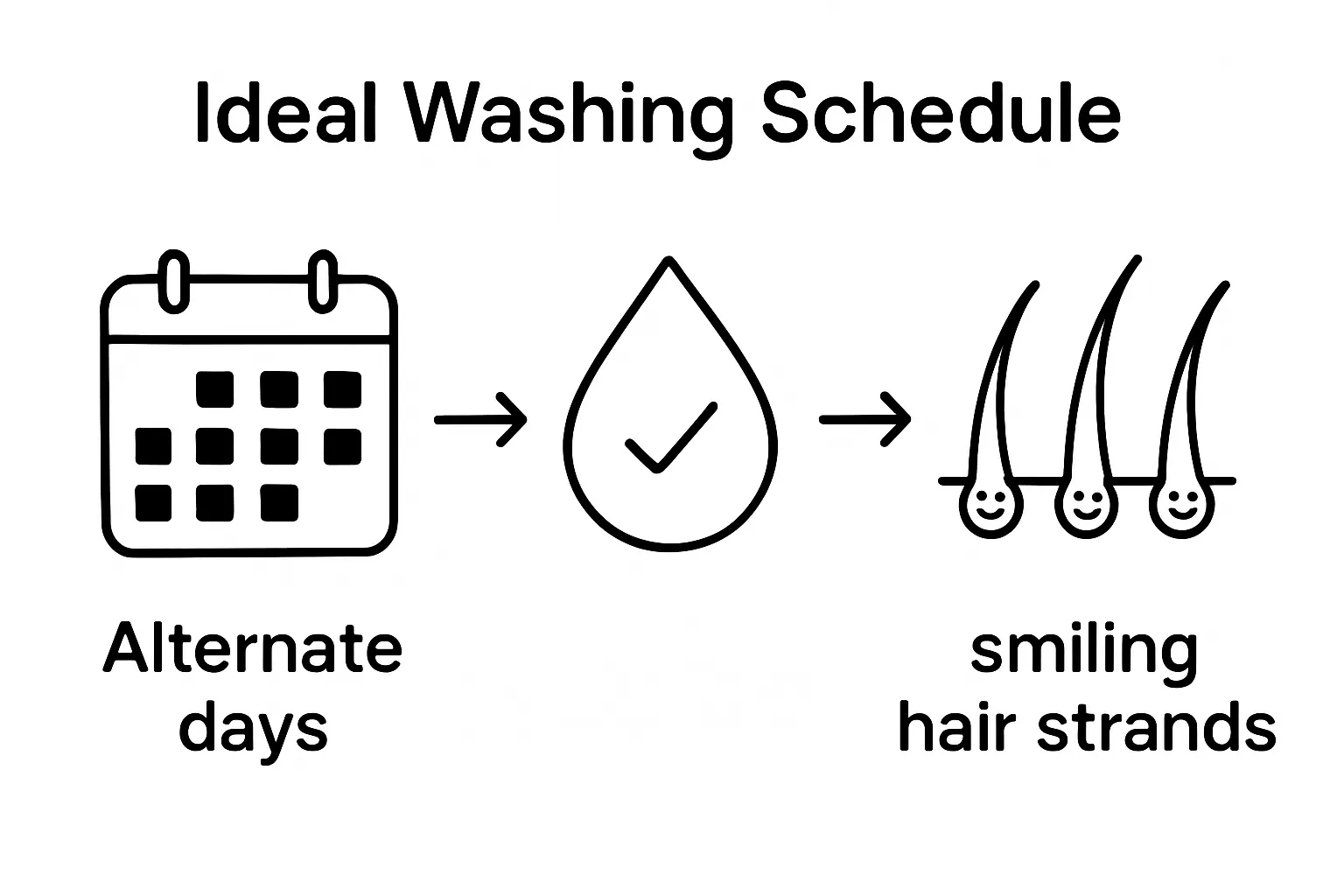
Step 4: Implement Effective Drying Techniques
Drying your hair is a critical phase in your daily hair care routine that can significantly impact hair health, texture, and overall appearance. The techniques you employ during this process can either nurture or potentially damage your hair’s structural integrity. Understanding and implementing gentle, strategic drying methods transforms this seemingly simple task into an opportunity for hair preservation and enhancement.
According to scientific research, aggressive drying techniques can cause substantial mechanical damage to hair shafts. Gentle handling becomes paramount in maintaining hair strength and preventing unnecessary breakage. Start by removing excess water carefully, avoiding rough towel movements that create friction and stress on delicate hair strands.
Consider the following recommended drying approaches:
- Use a microfiber towel or soft cotton t-shirt instead of terry cloth
- Gently pat and squeeze hair rather than rubbing vigorously
- Allow hair to air-dry whenever possible
- Use lowest heat setting on blow dryers if mechanical drying is necessary
Develop a nuanced approach that adapts to your specific hair type and texture. Thick, curly hair requires different drying techniques compared to fine, straight hair. For those with curlier textures, consider using a diffuser attachment on your blow dryer to distribute heat evenly and maintain natural curl patterns. Fine or thin hair benefits from minimal manipulation, focusing on preserving volume and preventing additional stress.
Integrate strategic techniques that minimize potential damage while accelerating the drying process. When using a blow dryer, maintain a consistent distance of at least six inches from your hair, moving the device continuously to prevent concentrated heat exposure. Temperature control is crucial – opt for warm or cool settings rather than high heat, which can cause significant structural damage to hair proteins.
Successful implementation of effective drying techniques means your hair looks healthier, feels smoother, and maintains its natural strength. Your chosen method should leave hair feeling soft, manageable, and free from unnecessary mechanical stress, setting the stage for subsequent styling steps in your daily hair care routine.
Below is a comparison table summarizing drying techniques and their purposes, helping you choose effective methods based on your hair type and daily routine.
| Drying Method | Key Features | Recommended For | Main Benefit |
|---|---|---|---|
| Microfiber towel/Cotton T-shirt | Gently pats hair, reduces friction | All hair types | Minimizes breakage and frizz |
| Air-drying | No mechanical heat, natural process | Most hair types | Preserves hair health |
| Blow dryer (low heat) | Uses adjustable temperature and airflow settings | Thick or curly hair | Faster drying, less damage |
| Blow dryer with diffuser | Even heat distribution, maintains curl pattern | Curly or textured hair | Defines curls, reduces frizz |
| Minimal manipulation | Avoids rough handling or excessive movement | Fine or thin hair | Maintains volume, prevents stress |
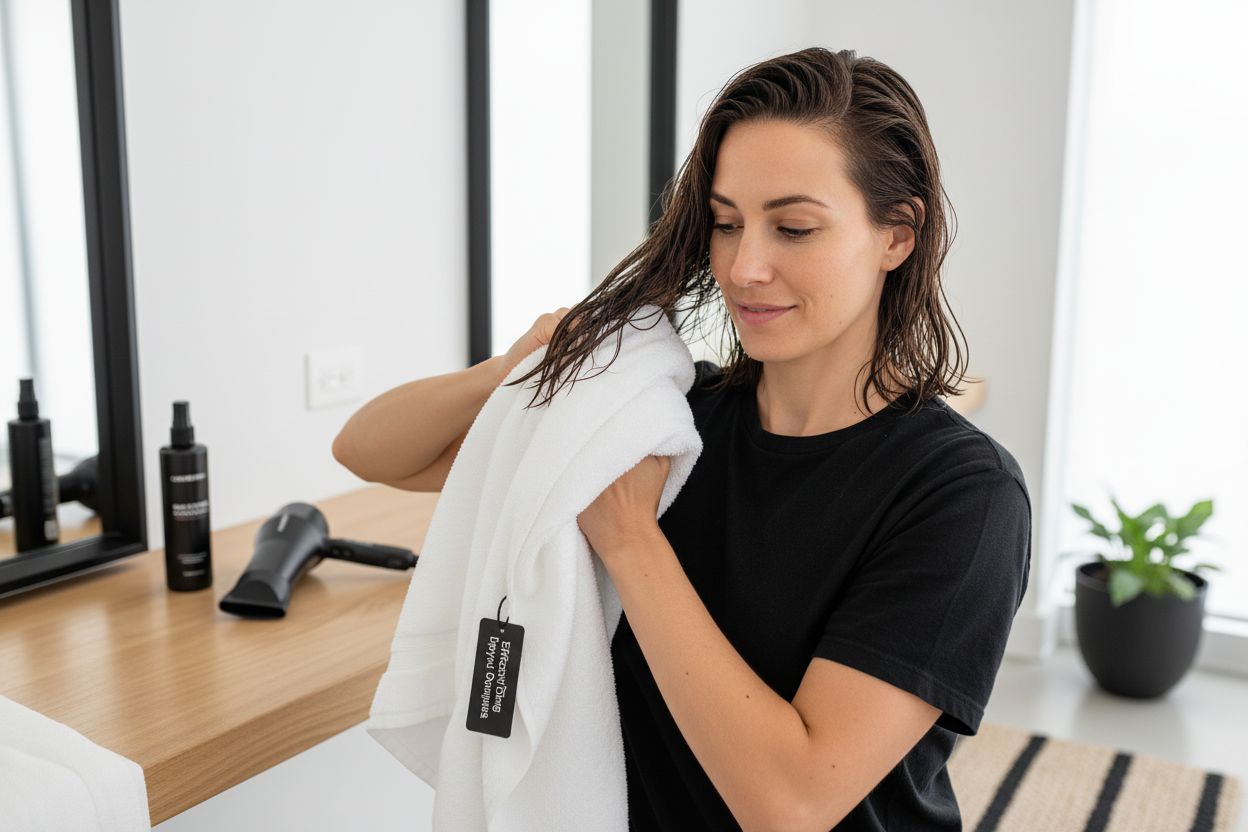
Step 5: Style Your Hair with Attention to Detail
Styling your hair is an art form that goes beyond mere appearance, representing a delicate balance between creative expression and hair health preservation. This crucial step transforms your carefully prepared hair into a personalized statement that reflects your individual aesthetic while maintaining its natural integrity. Understanding the nuanced techniques of styling allows you to create stunning looks without compromising your hair’s long-term wellness.
According to scientific research, heat styling should be approached with strategic moderation to prevent protein degradation in hair fibers. Temperature management becomes paramount when using styling tools, requiring a thoughtful approach that prioritizes hair protection. For those interested in exploring more advanced styling techniques, our guide on straight hair styling offers additional insights into creating elegant looks.
Consider these essential styling principles:
- Select styling tools with adjustable heat settings
- Use heat protectant products before applying thermal tools
- Maintain consistent movement when applying heat
- Choose styling techniques that complement your hair’s natural texture
Develop a styling routine that adapts to your hair’s unique characteristics and daily requirements. Protective styling techniques like loose braids or soft updos can minimize mechanical stress while creating sophisticated looks. Pay close attention to your hair’s response to different styling methods, noting how various techniques impact its texture, volume, and overall health.
Professional stylists recommend investing time in understanding your hair’s specific styling needs. This might involve experimenting with different tools, products, and techniques to discover the most flattering and least damaging approach. Remember that styling is not just about immediate visual impact but about maintaining your hair’s long-term vitality and strength.
Successful hair styling means achieving a harmonious balance between aesthetic desires and hair health. Your chosen techniques should enhance your natural hair texture, provide the desired look, and protect your hair from potential damage, creating a confident and polished appearance that reflects your personal style.
Step 6: Monitor Hair Health and Adjust Accordingly
Monitoring your hair’s health is a dynamic process that requires consistent observation, thoughtful analysis, and proactive adjustments. This critical step transforms your hair care routine from a static set of practices into an adaptive, responsive strategy that evolves with your hair’s changing needs. Understanding the subtle signals your hair communicates allows you to make informed decisions that maintain its vitality and appearance.
According to scientific research, early identification of hair and scalp changes can prevent potential long-term damage and address underlying health concerns. Systematic observation becomes your most powerful tool in maintaining exceptional hair health. Develop a routine of regular, intentional assessment that goes beyond surface-level appearances.
Establish key monitoring indicators:
- Texture changes in hair strands
- Increased breakage or shedding
- Scalp sensitivity or irritation
- Changes in hair growth patterns
- Unexpected alterations in oil production
Create a comprehensive hair journal to track these observations systematically. Document your hair’s response to different products, environmental conditions, dietary changes, and styling techniques. This personalized record becomes an invaluable resource for understanding your hair’s unique characteristics and identifying potential areas of concern before they become significant issues.
Understand that hair health is holistic, extending beyond topical treatments. Nutrition, stress levels, hormonal changes, and overall physical health significantly impact hair condition. Consider consulting with healthcare professionals or specialized trichologists if you notice persistent changes or unusual symptoms. Your approach should be proactive rather than reactive, focusing on prevention and early intervention.
Successful hair health monitoring means developing an intuitive understanding of your hair’s communication signals. Your ability to recognize subtle changes, make thoughtful adjustments to your care routine, and respond to your hair’s evolving needs will ensure continued hair strength, shine, and overall vitality.
The table below outlines common hair health monitoring indicators, what they might mean, and recommended actions, making it easier to track and address emerging concerns in your routine.
| Indicator | Possible Meaning | Suggested Action |
|---|---|---|
| Texture changes | Product buildup, damage, or dryness | Clarify, adjust product use |
| Increased breakage/shedding | Over-manipulation, dryness, health shifts | Reduce stress, hydrate, review styling |
| Scalp sensitivity or irritation | Allergic reaction or dryness | Check ingredients, moisturize, consult pro |
| Changes in growth patterns | Hormonal, nutritional, or health changes | Track diet, manage stress, seek advice |
| Altered oil production | Product change, environment, hormones | Adjust routine, monitor further |
Unlock Personalized Hair Care Success at Joel C Ma Hair Studio
Are you struggling to truly master your daily hair care routine? If your pursuit of luxurious styles leaves you overwhelmed by product choices and inconsistent results, you are not alone. This article outlined steps such as assessing your hair type, choosing quality products, and designing mindful washing schedules. Even with the best advice, it can be difficult to understand your unique hair characteristics or translate theory into beautiful, head-turning hair every single day. For those wanting hair that feels healthy, strong, and perfectly styled, expert guidance can make all the difference. Discover how our Uncategorized Archives – Joel C Ma Hair Studio page features in-depth tips and inspiration curated by leading hair professionals.

Experience a new level of personalized hair care and styling at Joel C Ma Hair Studio. Book a one-on-one consultation and let our team of experts design a tailored routine that aligns with your goals and unique hair needs. Spots fill fast for our premium hair transformations. If you desire artistry, professionalism, and true mastery of your daily routine, visit our website and start your journey toward your most luxurious hair yet.
Frequently Asked Questions
What factors should I consider when assessing my hair type?
You should evaluate your hair’s natural texture (straight, wavy, curly, coily), scalp condition, oiliness or dryness, elasticity, strength, and overall health indicators like split ends or breakage.
How can I select the right hair care products for my specific needs?
Focus on ingredients that align with your hair type, such as natural oils, keratin, and vitamins. Avoid harsh chemicals like sulfates and parabens. It’s crucial to understand the ingredient list to find products that nourish and support your hair’s health.
How often should I wash my hair based on different hair types?
Washing frequency varies by hair type: oily hair typically needs washing more often, while dry or textured hair benefits from less frequent washing. Monitor your hair’s response to find the best schedule for maintaining its health and moisture balance.
What drying techniques should I use to protect my hair?
Use a microfiber towel or a soft cotton t-shirt to gently pat and squeeze excess water out of your hair. If using a blow dryer, keep it at least six inches away, use low heat, and opt for air drying whenever possible to minimize damage.
Recommended
- Uncategorized Archives – Joel C Ma Hair Studio
- Understanding the Signs of Unhealthy Hair for Luxurious Styles – Joel C Ma Hair Studio
- Salon, Author at Joel C Ma Hair Studio
- Understanding Healthy Hair Habits for Luxurious Locks – Joel C Ma Hair Studio
- Best Hairstyles for Summer: Trendy Looks to Stay Cool – Be Juliet


